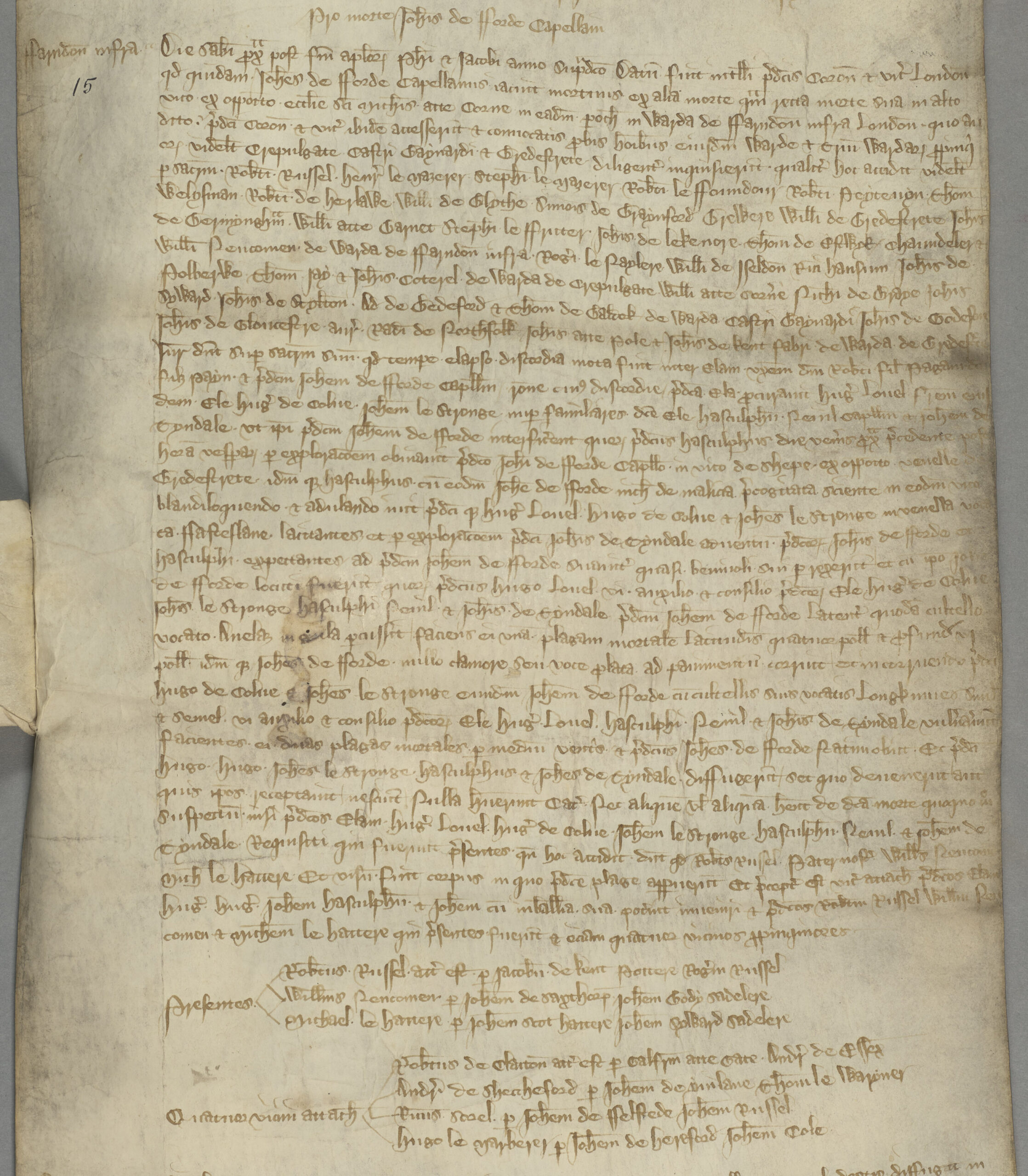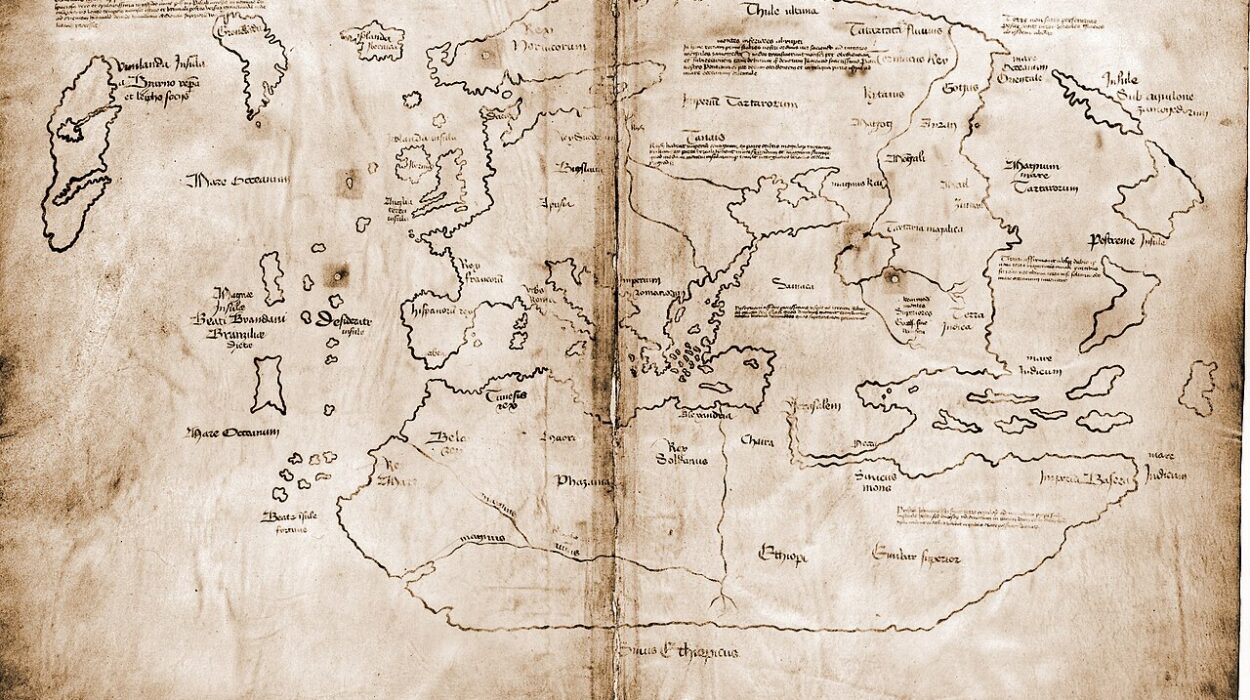The world of medieval crime has long been the subject of fascination, with many unsolved mysteries from that era still begging for answers. However, a new investigation into a nearly 700-year-old murder has brought to light startling revelations, revealing a tale of revenge, power, and betrayal that highlights the volatile intersection of church and nobility in 14th century England.
In May 1337, John Forde, a priest, was brutally murdered on a busy London street, his throat slit in broad daylight near St. Paul’s Cathedral. Though the case had remained one of the many unsolved mysteries of medieval England, recent research by Professor Manuel Eisner, a criminologist from the University of Cambridge, has uncovered a compelling narrative behind the crime, shedding new light on the circumstances surrounding Forde’s death. The findings expose a deeply personal motive tied to vengeful nobility, political intrigue, and a long-standing feud between the church and the aristocracy.
The Dark Side of Power and Penance: Ela Fitzpayne’s Descent
The murder of John Forde appears to have been far from a random act of violence. Eisner’s research uncovers evidence suggesting that the crime was part of a personal vendetta orchestrated by Ela Fitzpayne, a prominent noblewoman from the English aristocracy. What makes this case even more intriguing is the connection between Forde and Fitzpayne, which dates back several years before his death.
The unraveling story begins in 1332, when Archbishop Simon Mepham of Canterbury accused Ela Fitzpayne of committing numerous acts of adultery, including having an illicit affair with Forde. The Archbishop, seeking to preserve the moral integrity of the church and its clergy, publicly denounced Fitzpayne’s behavior and imposed a severe punishment on her. She was ordered to make a series of humiliating penances, including barefoot walks of shame across the nave of Salisbury Cathedral, carrying a heavy candle to the altar while bearing public scorn.
This penance was not only a form of spiritual atonement but also an attempt to assert the power of the church over the aristocracy, which had long been a source of tension. Ela Fitzpayne, however, did not seem to comply. The Archbishop’s letters show that she continued to defy the imposed penance and fled to Rotherhithe, where she was excommunicated for her continued rebellion against ecclesiastical authority.
This humiliation at the hands of the church seems to have set the stage for an act of ruthless revenge, one that would have devastating consequences for Forde.
A Crime of Passion and Betrayal: The Events Leading to the Murder
By 1337, the relationship between Forde and Fitzpayne had become more complicated. Forde had, at some point, been a key figure in Fitzpayne’s criminal network, allegedly participating in a raid on a Benedictine priory. This raid, which took place in 1322, involved a gang of extortionists, including Forde and Fitzpayne’s husband, Sir Robert Fitzpayne, as well as their associates. Together, they broke into the priory’s buildings, stealing livestock and damaging property. The motivations behind this crime appear to have been tied to escalating tensions between England and France, as well as the growing animosity between the church and England’s nobility.
Forde, as the rector of a parish in Okeford Fitzpaine, a village on the Fitzpayne family estate, would have had close ties to Ela Fitzpayne. The raid on the priory could have been a way for Forde to solidify his allegiance to the Fitzpayne family while simultaneously demonstrating his loyalty to secular power over the ecclesiastical authority. Such alliances were not uncommon during this period, when personal and political interests often superseded religious duties.
However, things took a dramatic turn after the Archbishop discovered Forde’s involvement in the affair with Ela Fitzpayne. Forde, now implicated in both moral and criminal transgressions, became a pawn in a larger struggle between the church and the aristocracy.
A Brazen Murder in Broad Daylight
John Forde’s murder on May 3, 1337, took place in the bustling heart of London, near St. Paul’s Cathedral. The area was a hotspot for trade, commerce, and social activity, making it an ideal location for a public execution or spectacle. The murder was as brutal as it was public: Forde was walking up Cheapside after vespers when he was approached by another priest, Hasculph Neville, who distracted him with a pleasant conversation. As they passed St. Paul’s, Forde was suddenly set upon by four men—Hugh Lovell, Ela Fitzpayne’s brother, and three other associates, including two former servants of the Fitzpayne household.
The attackers were swift and efficient. Lovell, wielding a 12-inch dagger, slit Forde’s throat, while the others, including Hugh Colne and John Strong, stabbed him in the belly. The attack occurred in full view of the public, with witnesses taking note of the identities of the killers. Yet, despite naming the culprits, the local jury, which included several tradesmen and artisans, seemed to turn a blind eye to the pursuit of justice. The Fitzpayne family, being of high social rank, were seemingly untouchable, and the jury’s unwillingness to act is a telling reminder of the class-based justice system that prevailed at the time.
In a striking parallel to modern political assassinations, the public nature of Forde’s death appears to have been a calculated move to send a message. The murder served as a brutal reminder of the power that Ela Fitzpayne still wielded, even in the face of ecclesiastical condemnation. For the nobility, this was not just a personal act of revenge; it was a political statement about the consequences of defying the aristocracy.
The Investigation and the Role of Class in Justice
The records of Forde’s murder offer a glimpse into the workings of medieval justice. The jury that investigated the crime consisted of 33 men, one of the largest juries recorded for any case in the Medieval Murder Maps project, which maps out crimes in England from the 14th century. Despite the overwhelming evidence—clear knowledge of the identity of the killers and the motive behind the crime—the jury’s investigation was hindered by class barriers and political influence. The Fitzpayne family’s high status appears to have shielded them from any real consequences.
While Hugh Colne, a former servant of the Fitzpaynes, was eventually indicted in 1342, the case remained largely unresolved for years. The fact that Colne was imprisoned in Newgate for the crime is notable, but it serves as a stark reminder of how the wheels of justice could be manipulated by the powerful. The Fitzpayne family, despite being named as the culprits in the murder, faced little to no repercussions for their actions.
The Power of Public Humiliation and Revenge
The true motive behind Forde’s murder becomes clearer when considering the role of public humiliation. Ela Fitzpayne, after enduring the Archbishop’s attempts to humiliate her, may have been motivated by a deep sense of shame and a thirst for revenge. In medieval society, where public reputation was everything, Forde’s role in alerting the Archbishop about her affair and his subsequent role in her punishment could have driven her to seek vengeance.
Public humiliation, particularly in the form of the penance imposed by the Archbishop, was a powerful tool of social control in the medieval world. However, it was also a weapon that could breed lasting resentment and hatred, which, as Eisner suggests, may have ultimately led to Forde’s assassination. The act of public violence, carried out in broad daylight, served not only as a personal revenge but also as a demonstration of the power of the Fitzpaynes over the clergy.
The Legacy of John Forde’s Murder
The case of John Forde serves as a powerful example of the intertwining of crime, politics, and class in medieval England. It underscores the way in which powerful families could manipulate the justice system, using their social and political influence to avoid accountability for heinous crimes. At the same time, it highlights the fragile nature of church authority during this period, when moral and religious institutions struggled to maintain control over the actions of the nobility.
Forde’s murder also sheds light on the human emotions that transcended time: pride, shame, betrayal, and revenge. The cold-blooded assassination of a priest in the shadow of St. Paul’s Cathedral serves as a reminder of how personal vendettas, once unleashed, could reshape lives and history. Even seven centuries later, the story of John Forde and Ela Fitzpayne continues to fascinate us, offering a glimpse into the complex and often dangerous world of medieval politics and power.
Reference: Spatial Dynamics of Homicide in Medieval English Cities: The Medieval Murder Map Project, Criminal Law Forum (2025). DOI: 10.1007/s10609-025-09512-7






